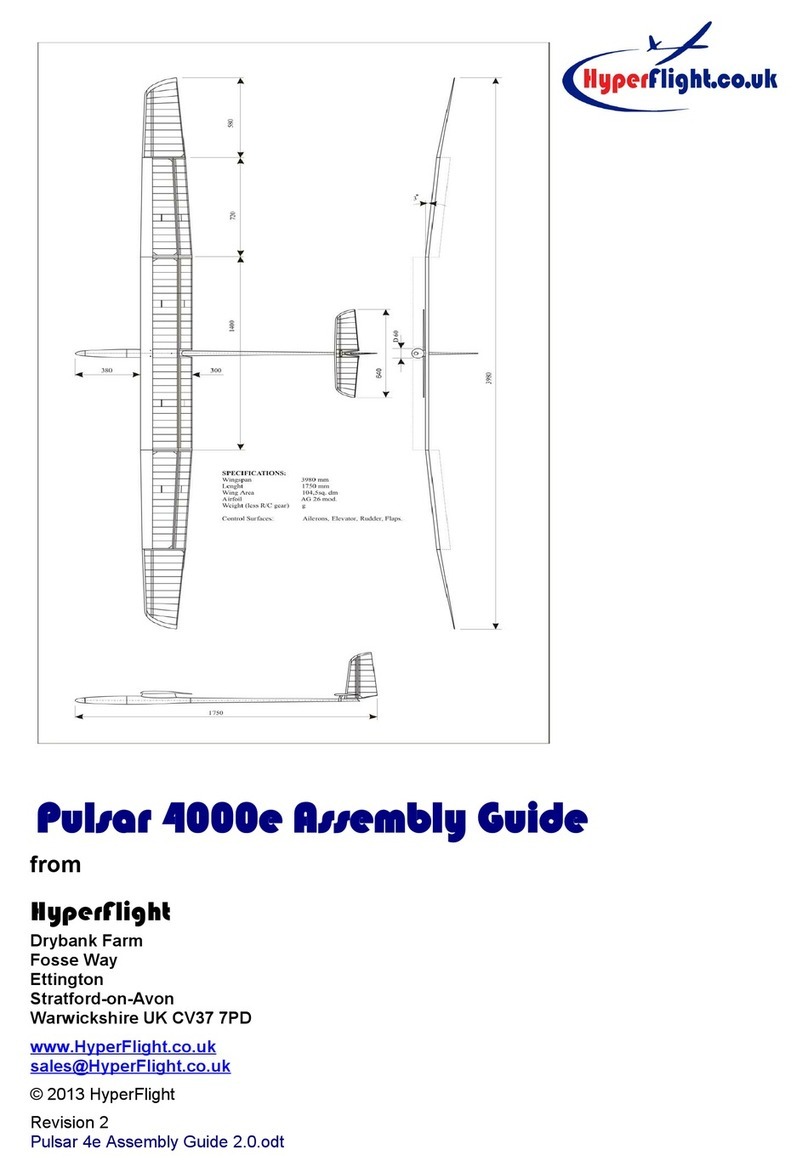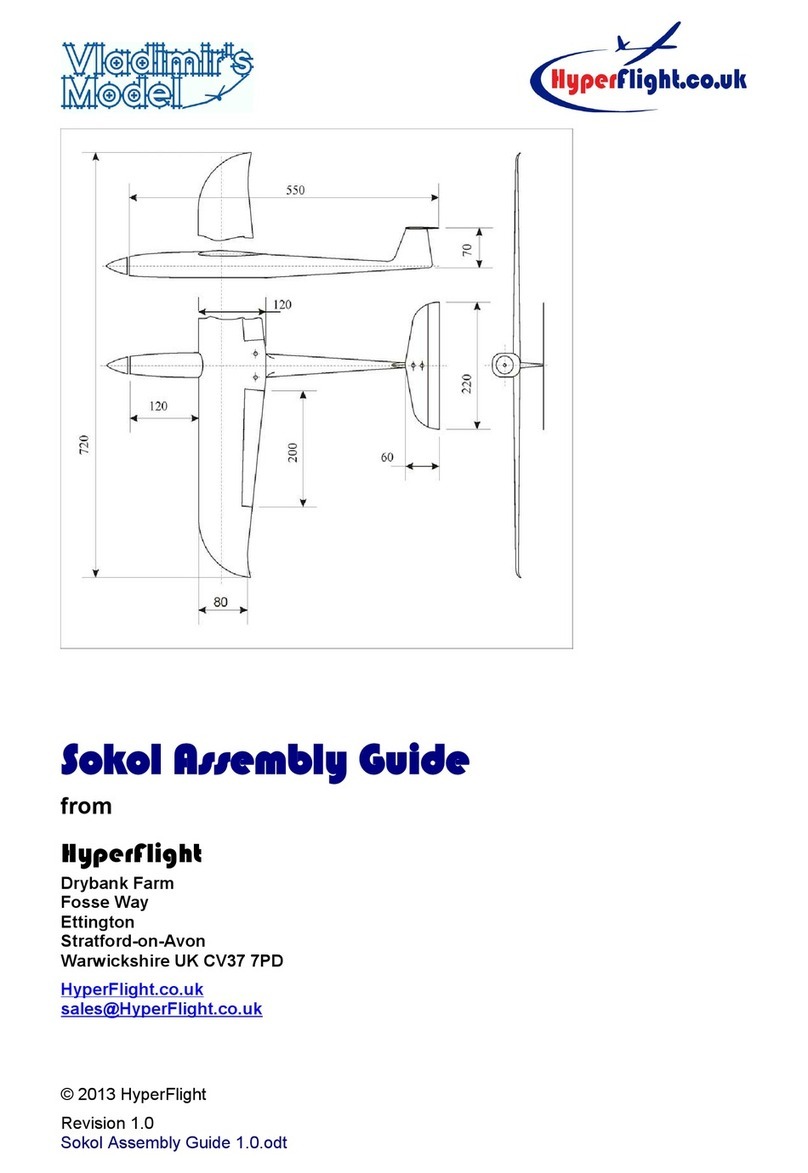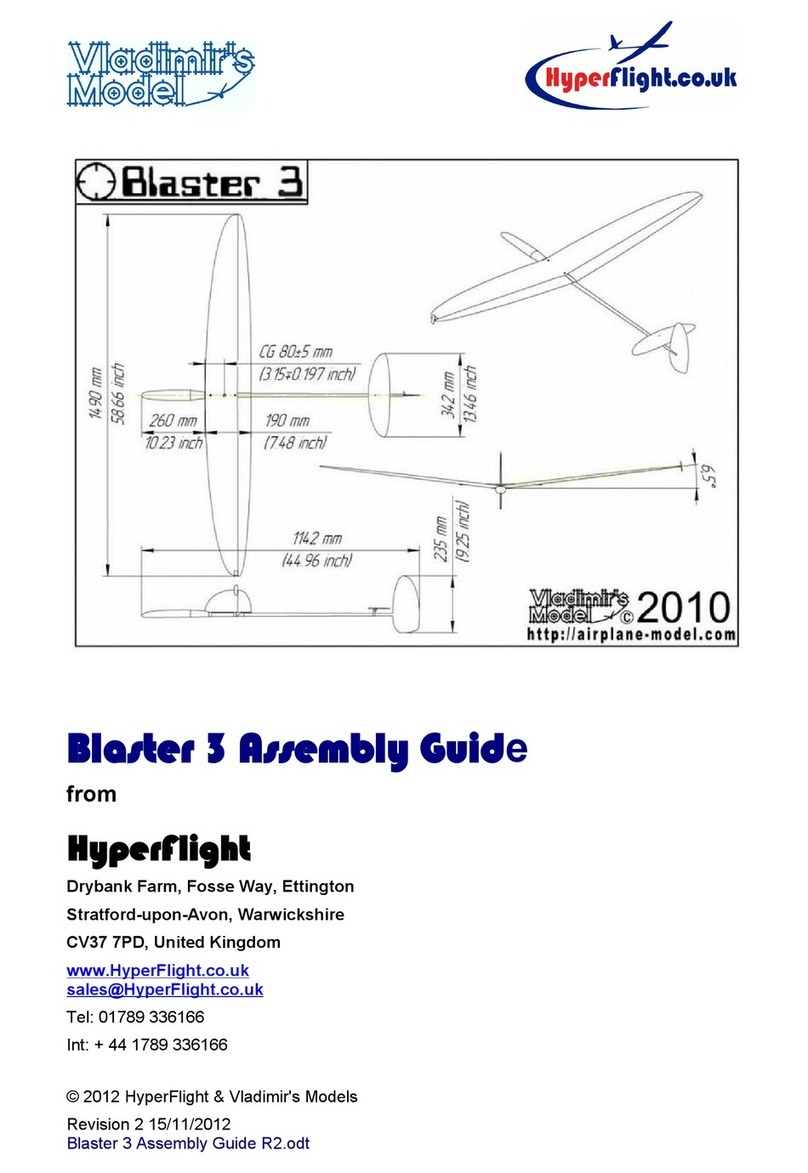HyperFlight Supra-e Assembly Guide
For a fixed fin, epoxy the fin to the end of the boom. Don’t be concerned if the fin
mounting hoops are too large for the end of the boom, either use the epoxy to fill the
gap or make up some shims from tape, carbon sheet or 1/64th ply. t is important to
use the complete boom length. ( f your kit has the V mount already glued to the boom
fit the horizontal stabiliser and ensure the fin is perpendicular to this while the glue is
setting.) For a removable fin test fit the 3mm carbon rod retaining dowel in the
matching holes in the boom and end fin retaining hoop. f necessary remove any slop
by shimming with tape. As the holes in the end of the boom can become elongated
with use and vibration the inside of the boom should be reinforced in the area of the
holes.
Bolt the horizontal stabiliser to the V mount. Epoxy the V mount to the boom, so the
horizontal stabiliser is perpendicular to the fin, and there is 2-3mm clearance between
the horizontal stabiliser TE and the fin LE.
Make up and fit the horizontal stabiliser pushrod, if necessary cutting the carbon tube
pushrod down to size. The horizontal stabiliser should be parallel to the boom with the
stick in the centre.
Remove the unnecessary ballast tube holders below the pylon by inserting a long blunt
object (1cm diameter dowel, chisel, large screwdriver, etc) into the pod and pushing on
the hoops. They break off easily as they have been almost sawed through. Don’t worry
about the half hoops remaining.
Bolt the wing centre panel or some scrap wood to the pod. Draw a centreline along the
workbench to ensure the boom is orientated straight with respect to the pod.
Epoxy the boom to the rear of the pod. f there is any looseness thicken the epoxy with
micro-balloons. Sight along the centre panel and the horizontal stabiliser and along the
workbench sight line while the epoxy is setting to ensure the surfaces are parallel and
the pod and boom are straight. Don’t get caught out by using fast epoxy!
Drill the nosecone for the motor bolts. Remove as much material as necessary to allow
the gearbox bearing boss to penetrate through the firewall, even if this results in a gap
between the rear of the spinner and the front of the pod. The firewall already has
downthrust built into it.
Bolt in the motor and speed controller, bolt together the nosecone to the pod, and
connect up the short Vladimir supplied extension lead. Either power the RC from the
UBEC (also called switching Battery Eliminator Circuit) in the speed control, or from a
separate UBEC, or use the other short lead for a receiver battery. At least a 3A UBEC
is required. For safety do not install a propeller until after the radio had been
programmed.
Thread the rear servo extension leads up the boom. This is fiddly, but is made easier if
you extend a length of wire down through the fin/boom hole and through the boom.
Attach the servo wires to this and pull them up. Tape the extension lead sockets to the
servo plugs to stop them becoming disconnected on a hard arrival – and subsequent
launch disaster.
Tape the fin servo cover in place.
Leave the wing connection black and red plugs loose in the top of the pylon for manual
connection to the wing wiring loom PCB.
(c) 2011 HyperFlight Drybank Farm Fose Way Ettington Stratford on Avon Warwickshire CV37 7PD 7

































